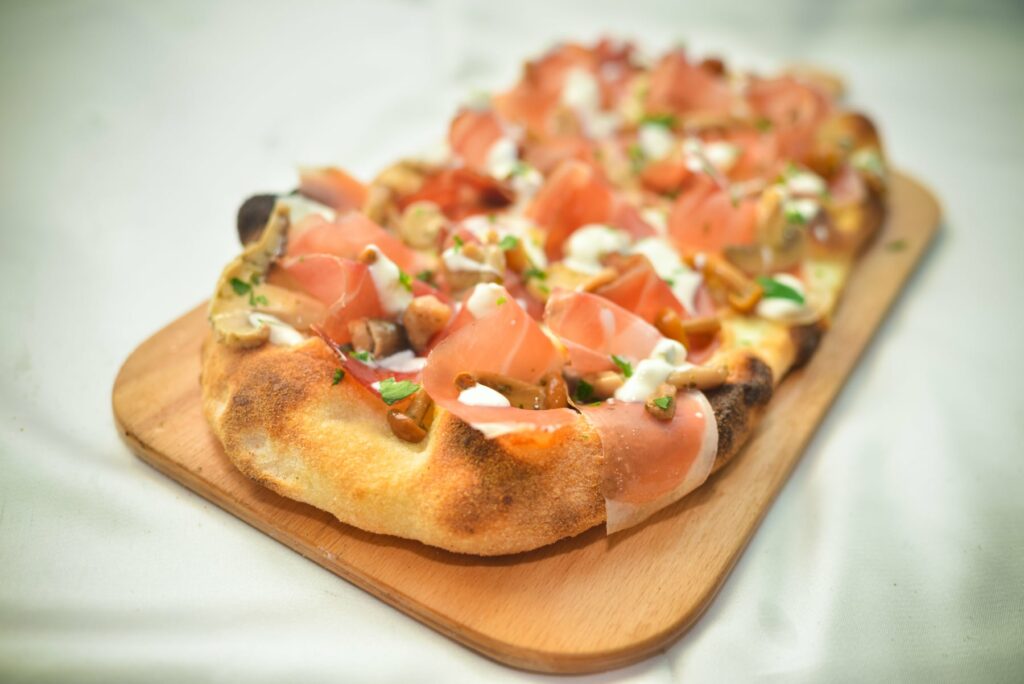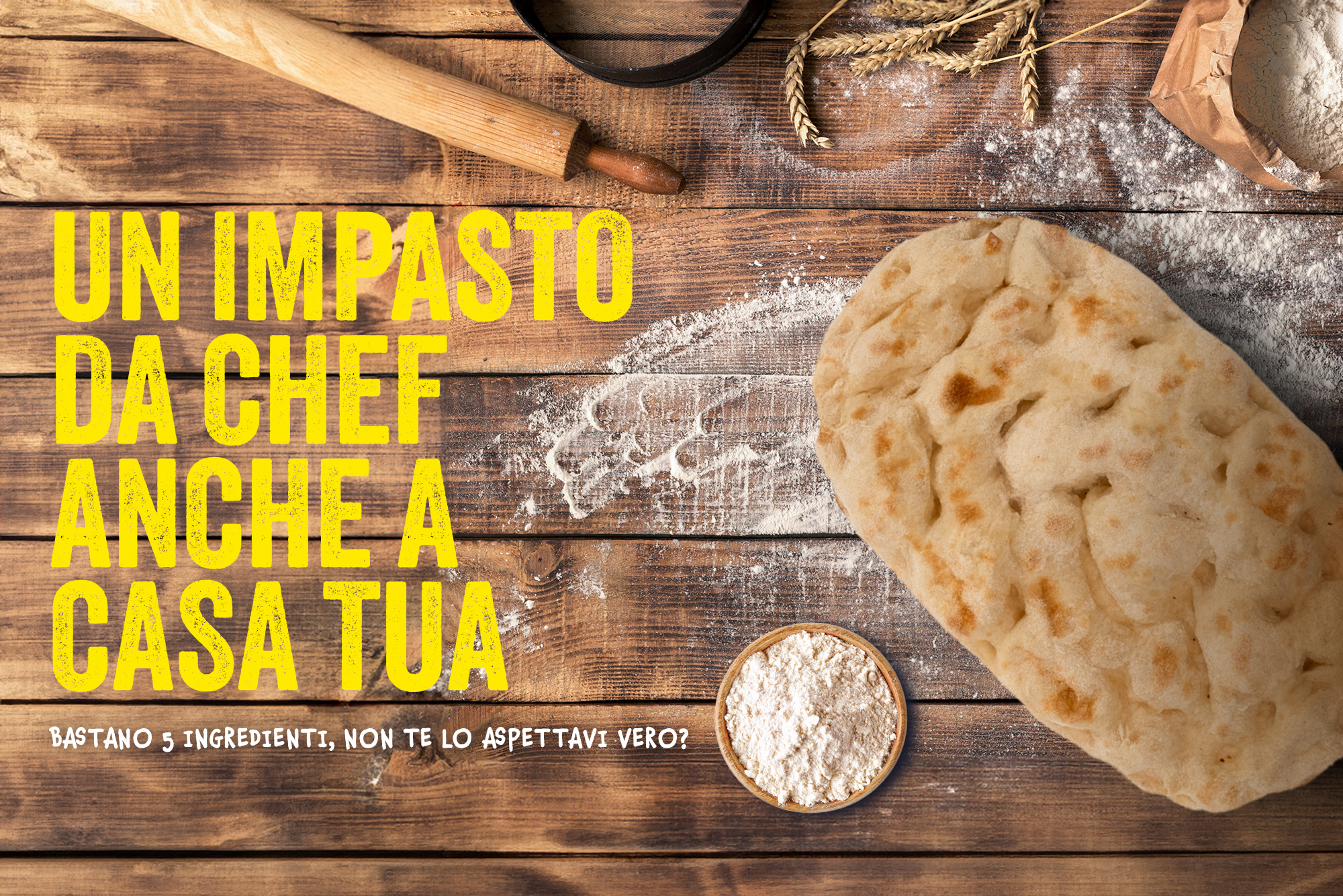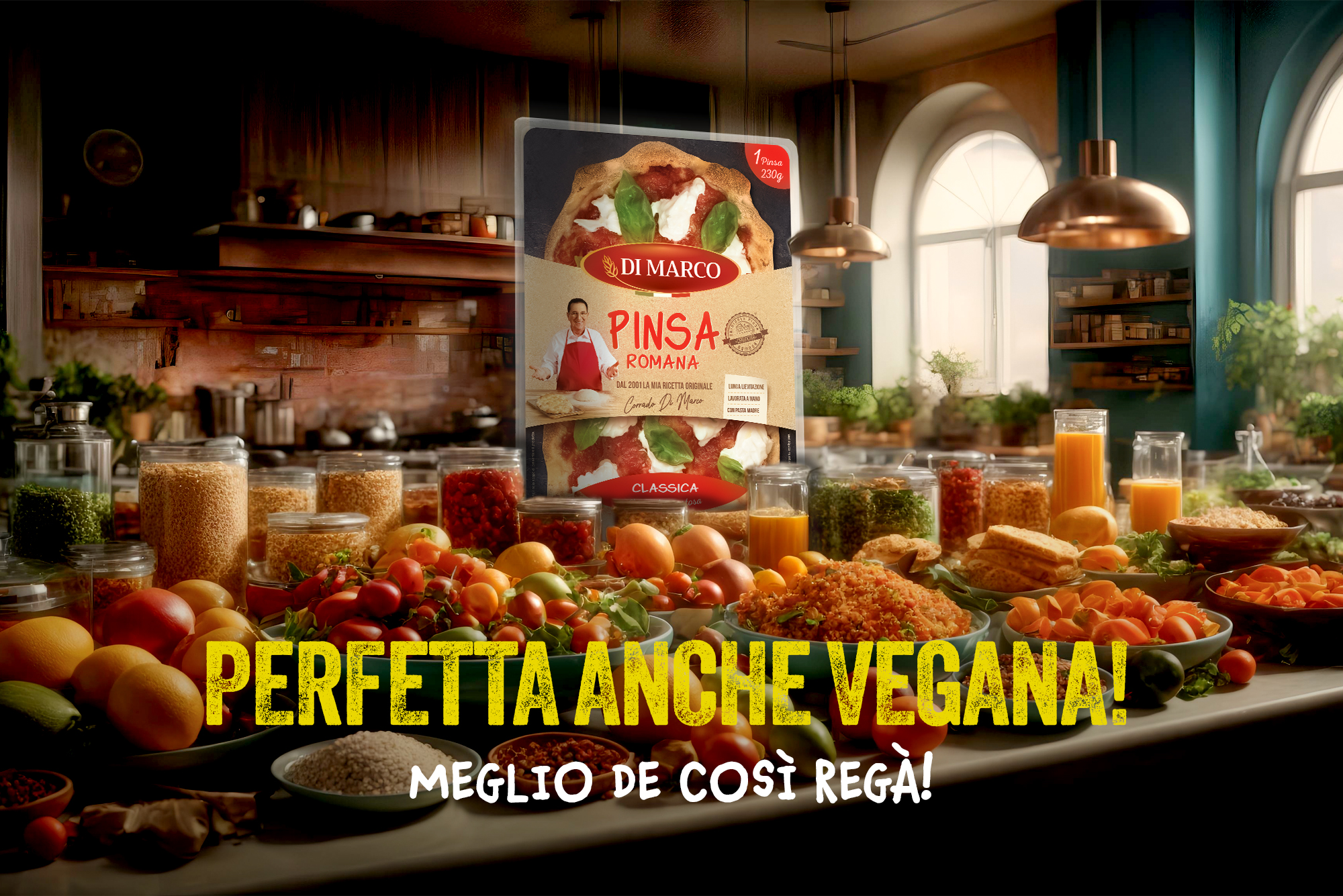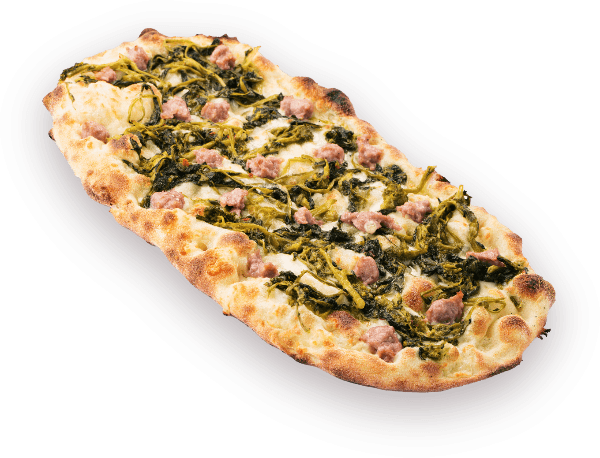Culinary evolution is an unstoppable phenomenon because innovators from every field come up with new ideas, techniques and tastes that enrich our gastronomic experience.
Sometimes, it is the combination of curiosity, scientific research, perseverance and the desire to create something new that changes old paradigms. This is exactly how pinsa was born: from an intuition of Corrado Di Marco from the constant research that followed and from the perseverance that characterises those who work every day to improve their product and feed their passion.
Ironically, not many people today wonder what pinsa is. That may be because they have already tasted it, spent an evening in a pinseria with friends, seen it on the shelves of supermarkets or ordered it in a pizzeria intrigued by its name. What everyone is interested in is the difference between pizza and pinsa, obviously going beyond the appearance (i.e., their shape). And rightly so: the two are apparently very similar, but inside, the differences are important.
What is pinsa and what is the mix of flours
Pinsa was born as a revolution in the world of pizza. It is more like a focaccia, can be garnished as desired and aims to stand out from its illustrious predecessor in terms of taste, digestibility and lightness. Instead of (only) wheat flour, pinsa is based on a mix of wheat, rice and soy flours, with the addition of sourdough, or dried starter dough.
Pinsa, invented by Corrado Di Marco and first launched on the market in 2001, owes its success to its ability to meet the new demands of consumers, who are asking for light and healthy food options. Moreover, pinsa works perfectly for vegetarian and vegan diets.
If you ask a regular consumer, they will emphasise the lightness and easy digestibility of the product, which does not compromise on taste and satisfies every palate. Pinsa is perfect for endless combinations of ingredients and toppings, which allows you to customise it and adapt it to your preferences. Finally, pinsa has the distinctive characteristic of being crunchy on the outside and soft on the inside, and that makes it stand out even more from the pizza we all know.
The hydration of the dough
The secret of pinsa lies in the dough, and there are precise rules to make it. We have already mentioned the mix of three flours; its composition is not only secret, but constantly evolves to keep up with the advances in research and new food trends.
A basic characteristic of the dough is the high level of hydration: for every kilo of flour, 80 cl of water, about 2-6 grams of dry yeast, 25 grams of salt and 20 grams of extra virgin olive oil must be used. The dough is left to rise for a long time, from 24 to 72 hours.
The types of Di Marco pinsa and where to find them
For several years now, pinsa has been a worldwide phenomenon. Gone are the days when the product was offered by just a couple of restaurants: today, we can count thousands: 7,000 to be exact.
Speaking of pinserie and quality control, in 2016 Di Marco founded the Associazione Originale Pinsa Romana as an eminent organization for the certification of pinserie. The standardisation, the training courses constantly provided by the company and the certifications guarantee that the product is not compromised in terms of quality.
Di Marco’s offer can meet the needs of consumers and of catering businesses. End consumers are offered Nuvola, the pre-cooked pinsa, which is available in large-scale retail outlets in several versions: the Classica and Multicereali to be stored in the fridge and the Classica Ambient, which can be kept at room temperature. The product blends the quality of Di Marco’s raw materials with the benefits of artisanal production and strict compliance with quality standards. For consumers, Nuvola also offers the convenience of pre-cooking: in just a few minutes, and with a little imagination, an extraordinary dish can be prepared.
The versatility of pinsa: ingredients and combinations for all tastes
One of the most fascinating aspects of pinsa is its versatility: pinsa is a blank canvas on which to create innovative and sometimes surprising combinations.
To avoid mistakes, though, you can start with the classics: a timeless tomato and mozzarella, perhaps with the addition of black olives, capers, sun-dried tomatoes and anchovies, to boost the taste.
But creativity does not stop here, and it is no wonder that chefs take on more daring experiments. The pinsa can be customised with vegan ingredients, such as cashew or tofu cheese, or can include exotic and sophisticated ingredients such as steamed octopus, mango or curry sauce to evoke distant culinary traditions.
In this blog, we often address the topic of recipes and combinations: like when we talked about the most interesting offers from restaurateurs (to recreate at home), healthy combinations, vegan recipes and summer dishes. Keep following us, you are sure to find interesting ideas to recreate at home!










